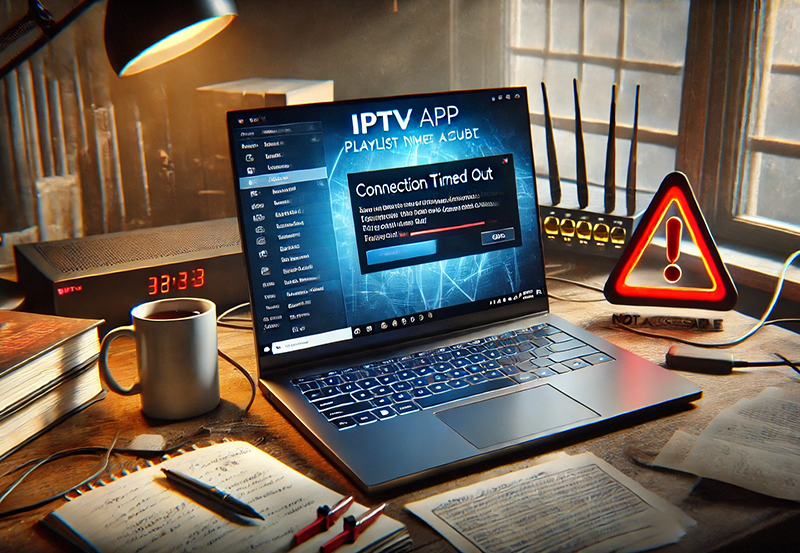IPTV has rapidly evolved, providing high-quality streaming experiences that rival traditional television. However, behind every smooth IPTV service lies the technology of streaming protocols, which ensure content delivery is efficient and seamless. The most widely used protocols in IPTV today include HLS, RTSP, MPEG-DASH, and a few others, each with unique characteristics. In this article, we’ll compare these IPTV protocols, explaining their strengths, use cases, and impact on streaming quality.
Buy 1 Year IPTV and Enjoy Unlimited Content
1. HLS (HTTP Live Streaming)
Overview: Developed by Apple, HLS (HTTP Live Streaming) is one of the most commonly used protocols for delivering video content online. It divides video streams into small chunks, allowing content to load dynamically and adapting to various network conditions.
Benefits:
- Adaptive Bitrate Streaming: HLS adjusts the stream quality in real-time, delivering higher resolution on faster connections and lower resolution when the internet is slow.
- Broad Compatibility: Supported by most devices and browsers, including iOS, Android, smart TVs, and web browsers.
- Reliability: HLS is highly stable and delivers smooth playback, reducing buffering for an enhanced viewing experience.
Drawbacks:
- Latency: HLS has higher latency compared to some other protocols, making it less ideal for real-time broadcasts.
Best Use Cases: General streaming services, on-demand content, and applications where latency is not critical.
2. RTSP (Real-Time Streaming Protocol)
Overview: RTSP is a network control protocol developed specifically for real-time media streaming. It’s popular in surveillance and IP camera systems but can also be used in IPTV for live broadcasts.
Benefits:
- Low Latency: Ideal for real-time streaming, such as live sports events, as it delivers content with minimal delay.
- Efficient Streaming: Supports high-quality streams without requiring large bandwidth, making it a cost-effective choice.
Drawbacks:
- Limited Compatibility: Not widely supported by browsers and requires specific players.
- Requires Specialized Setup: RTSP usually requires dedicated servers and setup, which can increase complexity for providers.
Best Use Cases: Live broadcasts, sports streaming, and applications where low latency is essential.12+ Best IPTV Service Providers Reviewed
3. MPEG-DASH (Dynamic Adaptive Streaming over HTTP)
Overview: MPEG-DASH is an adaptive bitrate streaming protocol similar to HLS, but it’s open-source and compatible across many platforms. Unlike HLS, which is specific to Apple, MPEG-DASH is designed to be universally applicable.
Benefits:
- Adaptive Bitrate: Like HLS, it dynamically adjusts video quality based on network speed.
- Cross-Platform: Compatible with most devices, making it a versatile choice for IPTV providers.
- Low Latency Options: Offers configurations for lower latency compared to HLS.
Drawbacks:
- Implementation Complexity: Setting up MPEG-DASH can be more complex and may require advanced configuration.
- Browser Support: While it’s broadly compatible, some older devices and browsers may not fully support MPEG-DASH.
Best Use Cases: General-purpose IPTV, especially for services seeking a cross-platform solution that balances quality and latency.
4. RTMP (Real-Time Messaging Protocol)
Overview: Developed by Adobe, RTMP was originally used for Flash-based video streaming. Though less common today, it’s still popular in live streaming applications, especially for pushing streams to servers.
Benefits:
- Low Latency: RTMP is known for low-latency streaming, which is valuable for real-time applications.
- Efficient Delivery: Ideal for live streams and large audiences due to its efficient handling of high-bitrate streams.
Drawbacks:
- Limited Device Support: Primarily used for ingesting streams to servers rather than end-user streaming, as most browsers and devices no longer support Flash.
- Outdated Technology: With the decline of Flash, RTMP is slowly being phased out in favor of newer protocols like HLS and MPEG-DASH.
Best Use Cases: Live event streaming, such as webinars or virtual events, and server-to-server streaming.
5. WebRTC (Web Real-Time Communication)
Overview: WebRTC is a protocol designed for peer-to-peer connections, primarily for video calls, but it’s gaining traction in live streaming for ultra-low latency needs.
Benefits:
- Ultra-Low Latency: WebRTC offers some of the lowest latency, making it ideal for interactive broadcasts and real-time applications.
- Browser Compatibility: Supported natively by most modern browsers without the need for additional plugins.
Drawbacks:
- Scalability Issues: Not as scalable as HLS or MPEG-DASH, as it’s mainly designed for small-scale interactions.
- Bandwidth Requirements: Higher bandwidth requirements can be a drawback for larger broadcasts.
Best Use Cases: Interactive streaming applications, such as live auctions, video conferencing, and any real-time IPTV interactions.
Choosing the Right Protocol
Each IPTV protocol has strengths suited to different streaming needs. HLS and MPEG-DASH are ideal for general entertainment where adaptive quality is essential. RTSP and WebRTC are more specialized, focusing on real-time streaming and low latency. Providers must consider their target audience, content type, and desired streaming quality to select the best protocol.
Conclusion
Understanding the differences between IPTV protocols is key to delivering an optimal streaming experience. Whether prioritizing low latency, high compatibility, or adaptive bitrate streaming, each protocol offers unique advantages that enhance IPTV service quality. By choosing the right protocol, IPTV providers can ensure a seamless, high-quality experience for their viewers.
EPG Integration on IPTV: A Simple Guide for Smooth Navigation



